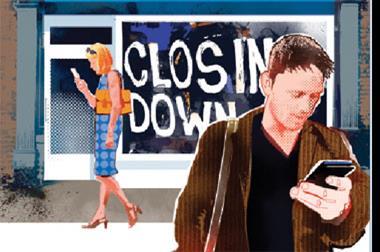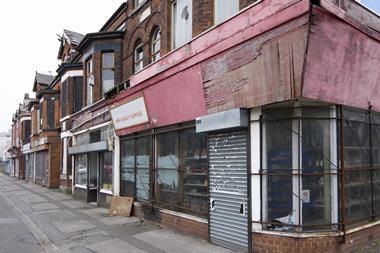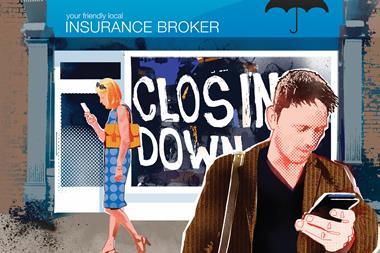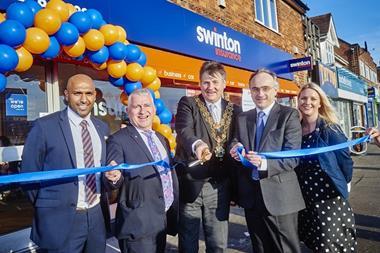The number of insurance shop fronts plummeted in 2017, with business moving online. But A-Plan aims to buck the trend and is opening more stores
The number of insurance shop fronts was cut by over a fifth in 2017, according to a report by PwC.
According to the report, only 14 shop fronts opened, meanwhile, a staggering 70 branches closed its doors. The total number of insurance stores stood at 203 at the end of 2017, compared to 259 the year before, a 22% reduction.
The year before that also saw a similar trend. At the end of 2015, there were 302 high street stores, but a net 43 (15%) of those closed, leaving 259.
Swinton factor
One broker who closed a lot of branches 2017, and has been a major contributing factor to the decline, is Swinton.
On 31 December 2016, Swinton had 214 branches and call centres in the UK. In the 16 months that have followed, that number has fallen to just 59.
But Swinton has been vocal on its strategy and reasoning behind the rapid decline.
Anne Kirk, customer director at Swinton Group, said: “Ever since Swinton started selling insurance door-to-door 60 years ago, we’ve evolved to reflect the changing needs of our customers who bought from their local branches first, then contact centres and now online. Fewer than 10% of our customers currently use our branches while 80% choose to buy our insurance online.
“As a result, we’ve invested heavily in our online channels – around £45m in our IT and digital capabilities. Plus, we have moved into a brand-new contact centre to service customers who still prefer to use the phone or speak to us via webchat. Like any business, we will continue to constantly review how we operate, to make sure we meet the changing needs of our customers and be there for them, however, and whenever they need us.”
So, Swinton has held an internal review of its business and decided the online route is the best way forward.
While the number continues to fall, one broker is backing the high street.
The A-Plan factor
In January 2018, A-Plan completed the purchase of Endsleigh, which has a high street presence.
The broker currently has 72 branches and call centres in the UK and is planning on many more. Another 85, in fact.
But what are the benefits?
Carl Shuker, CEO of A-Plan, explained: “We wanted to gauge exactly how much people value the expertise provided by their local retailers and businesses. It’s almost 30 years since the world-wide-web was created and 24 years since the first online shop, yet despite the huge level of convenience the internet has brought us, it is clear from the survey results, that we still need and value human interaction and advice.
“The antidote to a faceless society is supporting local people and businesses; and providing personalised and genuine customer-service, face-to-face.“
Shuker then explained how A-Plan is working with local businesses to try to reinvigorate the high street once more.
He said: “We are teaming up with businesses across England to form a local business network enabling A-Plan clients who take out a new car or home insurance policy to spend a £50 pre-paid Mastercard on their local high street. The Local Network card will also provide customers with ongoing discounts and rewards to be redeemed in participating stores.”
Coversure backs high street
Another broker that backs the high street is Coversure.
Coversure’s number of branches and call centres has stayed around the same number for a number of years, around the mid-90s.
Since 2017 Coversure has opened new offices in Bingley, Leeds, Crawley and Falkirk. And most recently, the broker opened a new branch in Cannock.
Coversure’s chief executive, Bob Darling says you need to be offering the right thing for the high street to work.
“There’s no denying that the broker market is tough at the moment – everyone in the industry knows about the spate of branch closures by big-name brokers,” he said.
“That said, Coversure have consistently shown that there are growth opportunities, but you need to have an exceptional offering that’s accessible to customers through the channels of their choice – be that face-to-face, by phone or online.
“Yes, there are drawbacks to the high street model; but in our experience, these are more than outweighed by the benefits our offices get from the visibility, and the value our customers attach to being able to get a personalised, expert service when they need it.
“As a business we’ve never rushed to open offices – we’ve no interest in simply adding pins to a map. We will only open offices where we can see sustainable, profitable businesses being built. We have 94 offices now, and we will continue to open new high street offices as the right opportunities arise: opportunities we know are out there.”







































2 Readers' comments